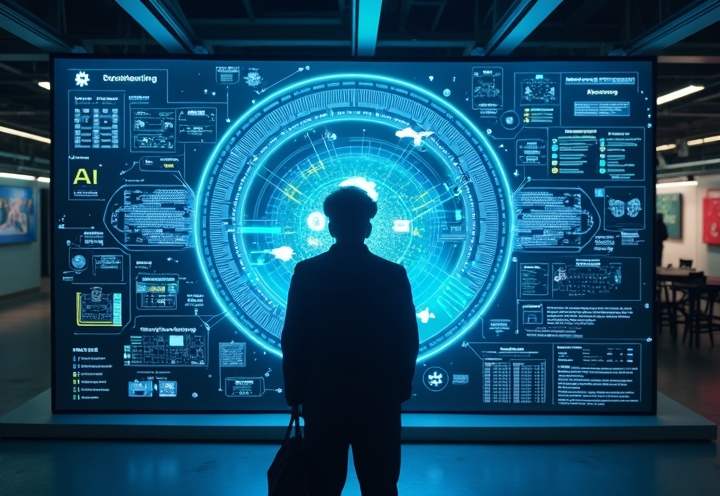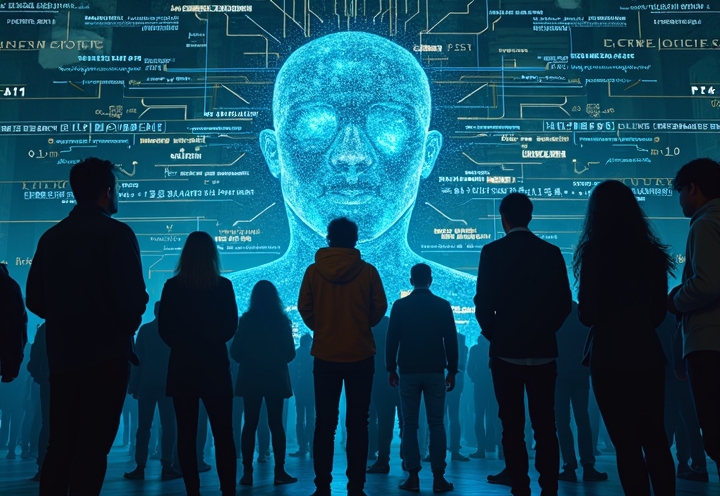
Why Leaders Miss AI’s 3x Efficiency Gains
Most leaders think AI is just chatbots, but they’re missing 3x efficiency gains. After 30 years building AI workflows, I’ve learned the best systems understand people, not just data.

Most leaders think AI is just chatbots, but they’re missing 3x efficiency gains. After 30 years building AI workflows, I’ve learned the best systems understand people, not just data.

Breaking complex AI tasks into smaller chunks gets way better results than asking it to solve everything at once. Here’s my 30-year coding process for decomposition prompting.

After 30 years of coding, I’ve seen workflows evolve from rigid rule-based systems to adaptive AI agents that make real-time decisions and optimize themselves.

30+ years of coding taught me every tech wave was overhyped. AI is different – it’s not automating tasks, it’s making entire workflows obsolete and reshaping what’s possible.

We’re optimizing workflows that AI has already made obsolete. After 30 years of coding, I’ve learned AI doesn’t speed up old processes – it replaces them entirely.


After 30+ years in code and 8 years in AI, here’s the difference between getting stuck and getting results: knowing when to iterate vs when to start fresh.

I learned that forcing positivity actually pushes people away and makes problems worse. When we dismiss struggles with “stay positive,” trust breaks down and real issues get buried.

I spent 30 years watching companies waste money on AI tools that employees hate. The failures aren’t technical – they ignore how humans actually work and think.

After 30 years of coding, I finally figured out the real AI skill that matters: breaking problems into pieces AI can handle, not chasing the latest tools or models.

After 30 years of coding, I learned the secret to AI success: treat agents like a specialized team, not magic wands. Break problems down, write clear prompts, give them tools.

30 years of coding taught me: one AI agent is useful, but a team of specialists working together changes everything. Most people miss this completely.

Developers treating AI like a teammate instead of a search engine are pulling ahead. The gap isn’t about better models—it’s about learning to delegate effectively through skills like prompt engineering, modularization, and workflow integration.

After 30+ years coding and 8 years in AI, I’ve learned everyone focuses on which LLM is best, but misses what really matters: knowing how to talk to it properly.

AI code looks perfect but feels wrong? After 30 years coding, I’ve learned the most valuable skill isn’t getting AI to write code – it’s knowing when to ignore it.

30+ years of coding taught me this about AI prompts: it’s not about finding the “perfect” prompt, it’s knowing when to iterate vs start over completely.

Most people prompt AI once and hope for the best. The real skill is knowing when to refine versus when to scrap everything and start over.

After 30 years coding and 8 years in AI, I learned the key skill isn’t perfect prompts – it’s knowing when to keep tweaking vs starting fresh. Break prompts into pieces.

Stop asking AI giant messy questions and expecting clean answers. Break problems into small chunks first, then prompt each piece separately. 30+ year coder shares the one technique that made AI actually useful for real work.

Most teams fail at AI because they treat it like a magic button instead of a team member. Here’s how to actually build effective AI workflows that save time.

After 30 years of coding, I cracked AI agent teams by treating them like junior developers – clear jobs, specific prompts, and one supervisor to keep everything clean.

Stop hunting for the perfect AI assistant. Build a specialized team instead. Multiple focused agents working together beats one do-everything bot every time.

Building AI agent teams isn’t about the tech – it’s about organization. Like any project team, you need specialists with clear roles, the right tools, and proper management.

After 30+ years of coding, I found an assistant that runs locally, keeps your code private, lets you choose AI models, and adapts to how you work instead of forcing their way.

You know that feeling when anger takes over and you say something you can’t take back? Here’s a four-step method to shift from reactivity to clarity.

After 30 years of coding, I learned AI delegation isn’t about losing control—it’s about humans and AI doing what they’re best at. Most teams waste time on repetitive work that AI should handle, but you need the right system.

Most people use AI like a search engine instead of a teammate. After 30 years of coding, here’s how to delegate to AI like you would any developer and get brilliant results.

Most developers struggle with AI coding tools while others dominate. After 30 years coding, I found it’s not about the smartest model – it’s how you use them.

After 30+ years coding, I’ve learned when AI assistants are confidently wrong – which happens more than you think. Here’s how to catch their mistakes and use them effectively.

30 years coding, 8 with AI: The real skill isn’t getting AI to write code – it’s knowing when to ignore its confident answers. AI hallucinates with authority.
Recent Comments